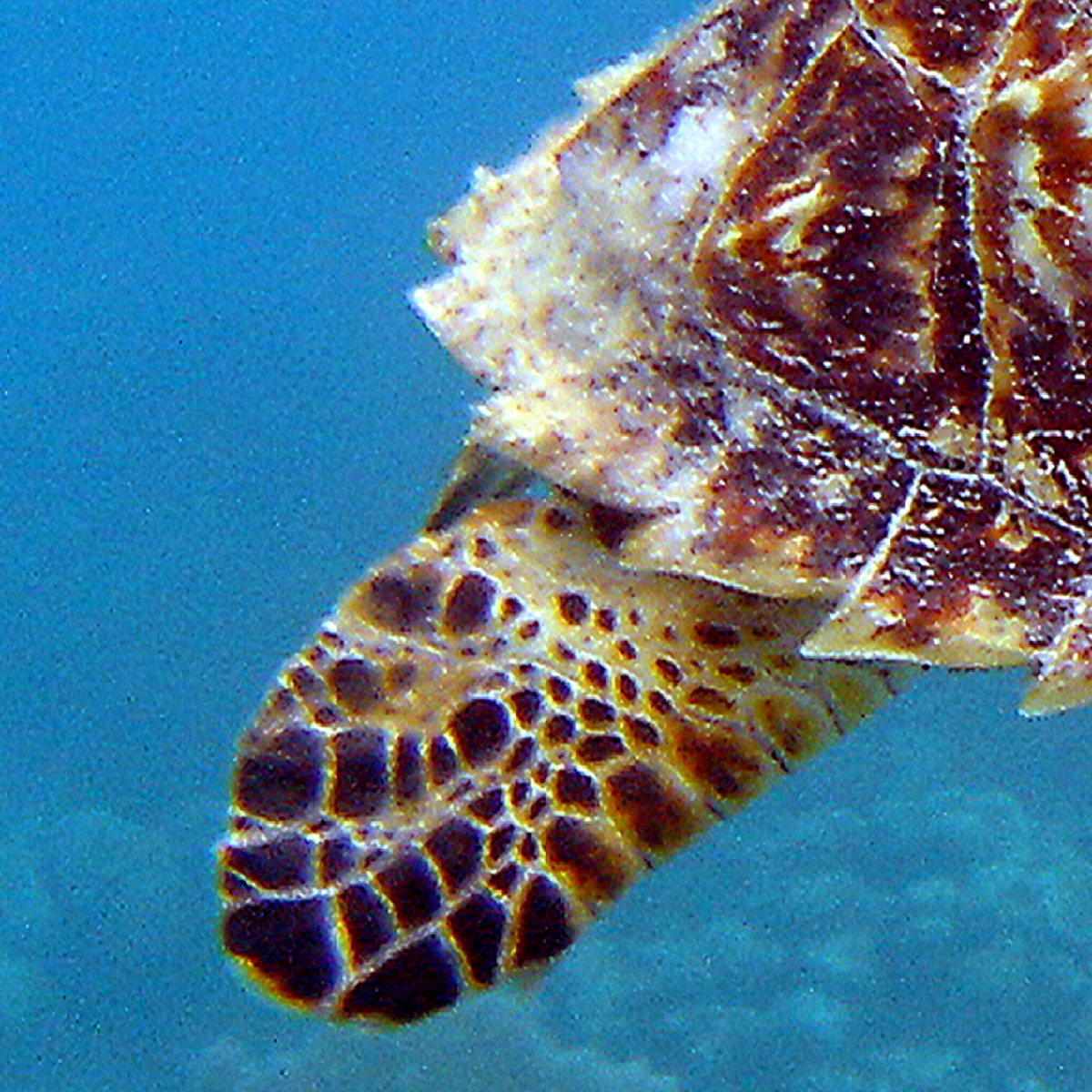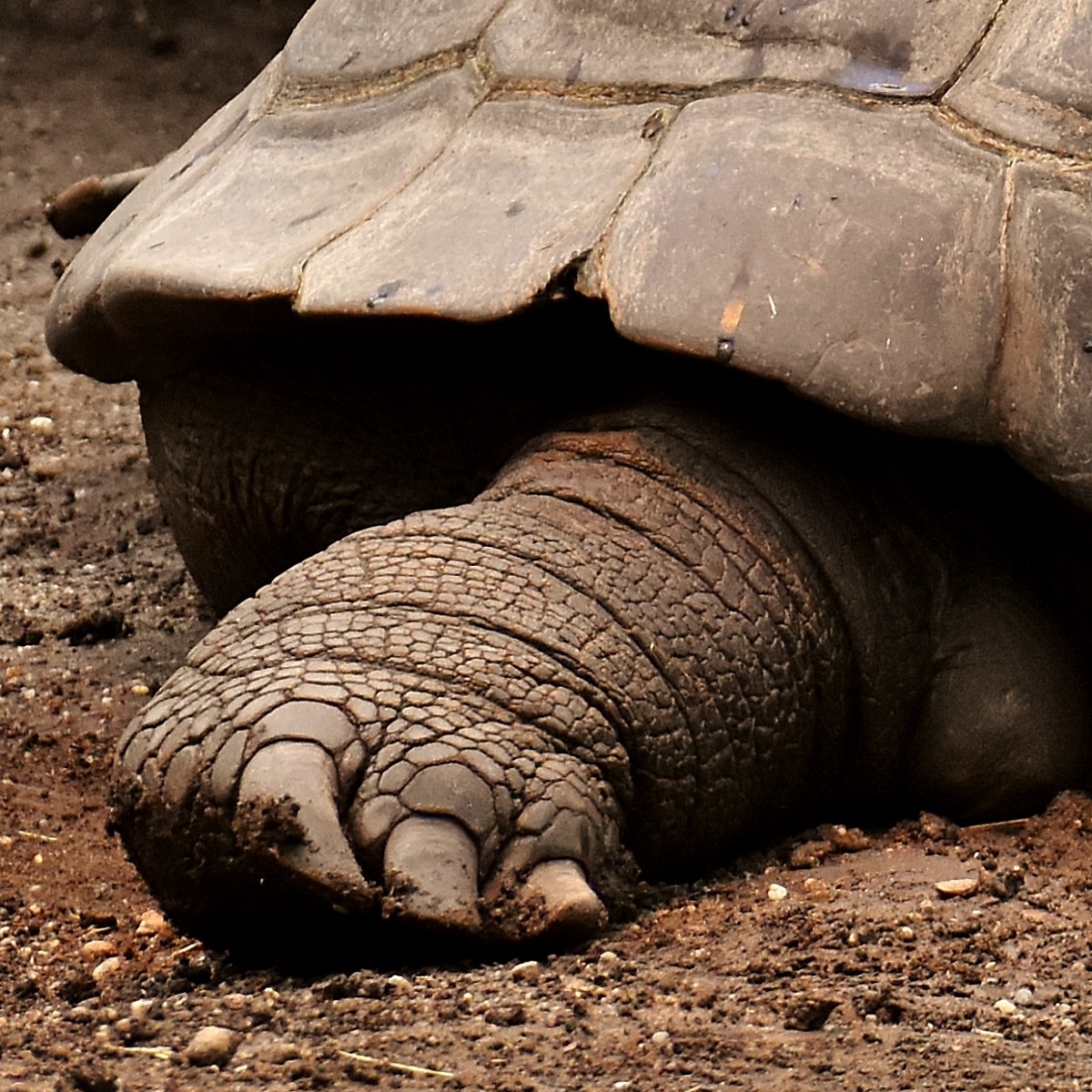

June 6, 2023
Probably one of the most often-asked questions of turtle or tortoise experts is, "What's the difference between a turtle and a tortoise?" Looking at the two images at the top of this page, the answer seems simple enough. Why, then, is there such social media brawling nearly every time the question comes up? Answer: because the words "turtle" and "tortoise" mean different things to different people. In this article, we'll take a look at scientific definitions and cultural definitions and see if we can't, perhaps, untangle the mess. At least a little...
First up is the scientific definition. Even with all the Latinized, multisyllabic words, this definition is the most straight-forward and most if not all university-trained biologists the world over agree with it. In elementary school, we all learned the most common animal classes: mammals, reptiles, insects, etc. As always, though, scientific taxonomy has to give them Latin or Latinized names. Mammals become "Mammalia." Insects become "Insecta." Reptiles become "Reptilia." And in turn these classes are broken down still further. One of these smaller categories is known as "orders." Within the Reptilia class, for example, we're familiar with the Squamata order although most of us know them as "Lizards & Snakes." We know of the Crocodilia order which is close enough to "Crocodile" that we understand what they're talking about. And then there's the Testudines order encompassing all of today's shelled reptiles. This order is sometimes also referred to as Chelonia. But like "lizards and snakes" for Squamata, like "crocodiles and alligators" for Crocodilia, by far the most common word used to describe the entirety of the Testudines order is "Turtles."
Turtles (Testudines), or at least their recognized ancestors, begin to appear in the fossil record during the Late Permian Epoch. The earliest known turtle was Eunotosaurus africanus and lived 260 million years ago. Back then, they were shell-less and had teeth. Even so they were already beginning to take on that classic turtle shape. By at least 210 million years ago, the shell was all there and the turtle would have been recognizable as such to anyone viewing it today. But then, around the time of the early Paleocene (between roughly 66-56 million years ago), a new family branched off from other turtle lines. Called Testudinidae, this new family was exclusively (or nearly exclusively) land-dwelling. Today, all turtles in the Testudinidae family are called "tortoises."
And yes, you read that correctly. According to scientific taxonomy, tortoises are just one out of the 14 recognized families within that "Turtles" order. If you take this link to the cladogram created by Nicholas Crawford and colleagues, you'll see the 14 different families in question. You can see that land-dwelling Testudinidae, aka "the tortoises" is just one of these families. By scientific definition tortoises are a family of turtles and it is therefore technically correct to refer to them as such. And right here is where the brawling usually begins. Perhaps the simplest thing one can say and still be correct is that "All tortoises are turtles but not all turtles are tortoises."
In truth, the vast majority of turtles in the world actually are from one of the thirteen other families. The widest-embraced popular definition really says something similar. Within that collection of all known "shelled reptiles," there's a certain group we call tortoises. Outside of that, though, there are also many "non-tortoises." And these, many people agree, are the ones that should be called turtles.
The most widely accepted popular definition is that "tortoises live only on land" and all other "turtles are aquatic or semi-aquatic." And even scientifically speaking, this is for the most part true. Muddying the waters, though, are species in transition like the desert box turtle, a land-dwelling TURTLE from the Emydidae family (a family which also includes pond turtles). And although tortoises often sink (and drown!) if they fall into deep water, the Galapagos and Aldabra tortoise species can "float" in an intentional, directional way that might as well be called swimming. Nevertheless the land/water definition is the one generally used. And the foolproof method for deciding which is a tortoise and which a turtle is by looking at the hind legs.
All tortoises (Testudinidae), regardless of their size, have hind legs that remind one very much of elephant legs. If you take a look at the two images at the top of this article it's very clear which is the turtle and which the tortoise. But looking for elephant feet has the added advantage of weeding out those terrestrial turtle species that are in fact, TURTLES regardless of whether or not the animal in question has ever entered a pond.
As you can see in the image above, the box turtle doesn't even appear to have webbed feet. In fact, though, it does have some slight webbing. This particular species, the Eastern Box Turtle, spends most of its life on land even though they can swim a little bit if they have to. The point, though, is that this terrestrial turtle's leg is not in any way reminiscent of an elephant's. And that, in the end, is the giveaway. This is what tells you that you're still dealing with a "non-tortoise" turtle.
Adding to the confusion still further is the fact that English-speaking people living in different geographic areas often develop slightly different vocabulary. This is even, sometimes, the case with turtles and tortoises, not to mention terrapins (which will be discussed in more detail in the next section).
Wikipedia (Last edited on 22 June 2022, at 12:16 (UTC) describes this situation with citations for each example. Quoted below:
"The word turtle is derived from the French tortue or tortre ('turtle, tortoise'). It is a common name and may be used without knowledge of taxonomic distinctions. In North America, it may denote the order as a whole. In Britain, the name is used for sea turtles as opposed to freshwater terrapins and land-dwelling tortoises. In Australia, which lacks true tortoises (family Testudinidae), non-marine turtles were traditionally called tortoises, but more recently turtle has been used for the entire group."
I discovered two other examples of this same phenomenon during my own investigations. The first is the European pond turtle (Emys orbicularis), a freshwater turtle in the Emydidae family that is also sometimes called "European pond terrapin" and, quite surprisingly, "European pond tortoise." The second surprise came in the name sometimes used for American box turtles: box tortoise. Approximately ten years ago, I was still able to find articles and care sheets on the internet discussing the "box tortoise." I notice now, however, that most such resources are gone from the web.
Perhaps even more convoluted than the distinctions between "turtles" and "tortoises" is the whole idea of "terrapins." What are they, exactly?
Sadly, the answer to that question may be different depending upon where you are from and the timeframe in which you have lived. As recently as the end of the 20th century, people in the US, UK and elsewhere thought of terrapins as a sort of "third option." (1) Tortoises were mainly terrestrial (2) Turtles (aka "Sea Turtles") were aquatic and lived in the ocean and (3) Terrapins were aquatic or semi-aquatic, living in or near fresh water or, at most, brackish water.
In more recent times, though, the word "terrapin" has seemed to fall out of favor in the US. More and more turtles that previously had the word "terrapin" in their names are being renamed. In fact, at the time of this writing, the only American turtle you can call "terrapin" without fear of contradiction in any circle is the diamondback terrapin. In the case of this species, the word "terrapin" is so culturally entrenched that many people skip saying "diamondback" and refer to them simply as "terrapins." Of all the American species that were once considered terrapins — or even those species outside the US that are still considered terrapins in their native lands — only the diamondback terrapin actually has the word "terrapin" as a part of its scientific name: Malaclemys terrapin.
Regardless of what may be going on in the US, though, there are freshwater turtles in Africa, Asia and Europe that are also called terrapins. Perhaps what's most confusing about the word "terrapin" is that there is no one turtle family to which it pertains. Many species whose alternate common name still bears the word "terrapin" — and indeed many of those whose "terrapin" name existed in centuries past but has now been replaced — were from different turtle families. The Emydidae family was once much larger than it is now and had many "terrapins" in it. But since the 1980s, all the "Old World Pond Turtles" (and a few others) who were once considered a part of the Emydidae family were reclassified as pertaining to a newly created family: Geoemydidae. It makes sense, then, that this family would also have several species named "terrapin." The third family to include turtles called "terrapin" is Pelomedusidae. It is often collectively considered to be the family of "African mud terrapins," and the species in this family are sometimes referred to as "terrapin species" rather than "turtle species."
Finally, the word "terrapin" has been historically tied to the concept of "edibility." There was a tendency to call a turtle that one ate, "terrapin." As a result of this other meaning of the word, some very unlikely species have sometimes been referred to as "terrapins." The Galapagos tortoises, for example, have often been referred to as "terrapins" in the journals of explorers because these same explorers often ate them.
Here's an actual online dictionary that still cites some of the older terrapin definitions, including the rather odd "tortoises as terrapin" definition. As it turns out, the meaning of the word "terrapin" has changed so much over time that one could easily write a whole history of the changes.
"Chelonian," pronounced "ki-loh-nee-uhn," is a word that dates back to ancient Greek: "χελώνη (chelone)," meaning "tortoise." Nevertheless, prior to 1950 the term Chelonia (coined by W. Ross and James Macartney in 1802) became an alternate word scientists used to describe the whole turtle order. Although, today, Testudines is now the official name for the entire turtle order, "chelonian" — hearkening back to Ross and Macartney's Chelonia — is still used in some publications, turtle organizations and internet writings. It means "shelled reptile" be it turtle, tortoise or terrapin. (See Wikipedia and Britannica for more.)
And for all that "chelonian," too, has its history, its meaning is very clear today and the word is less likely to spawn heated debate. I have offered it up here at the end as an alternative. But the final takeaway is this. Scientifically speaking, all tortoises are turtles. Not all turtles are tortoises. And chelonians are all of the above. —CH